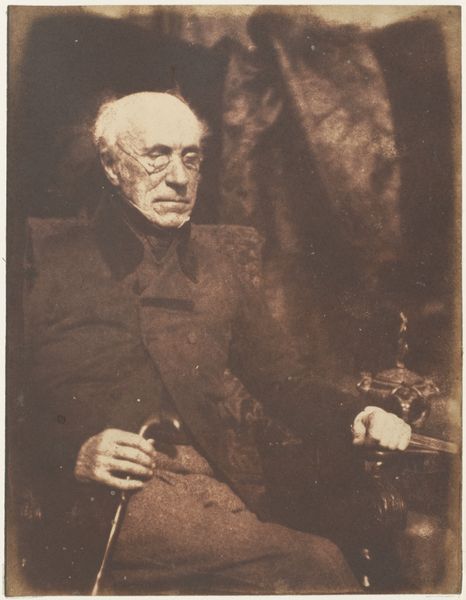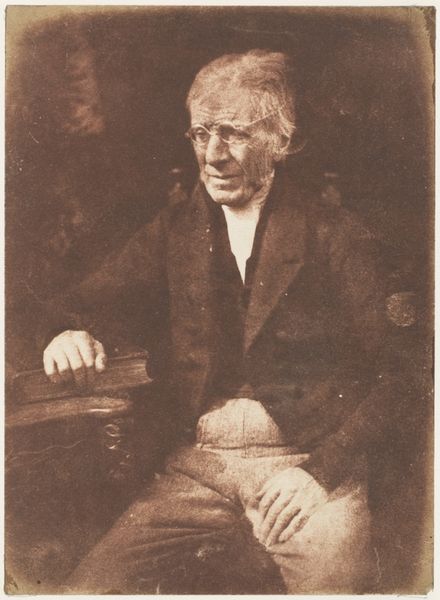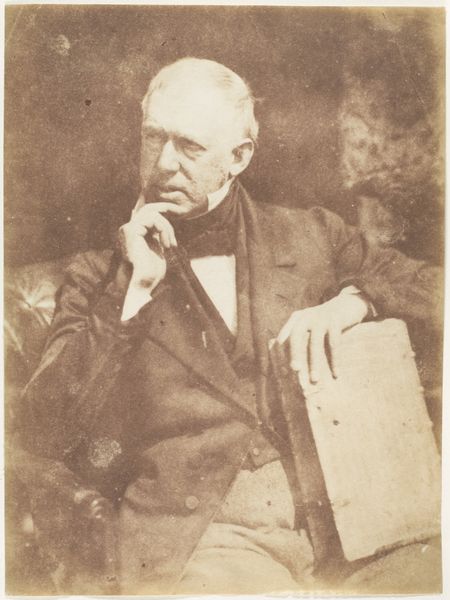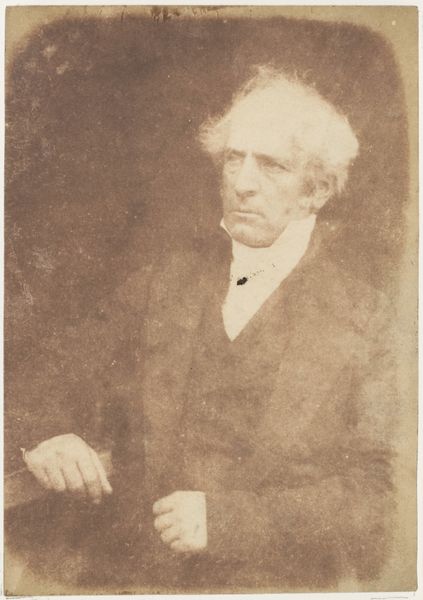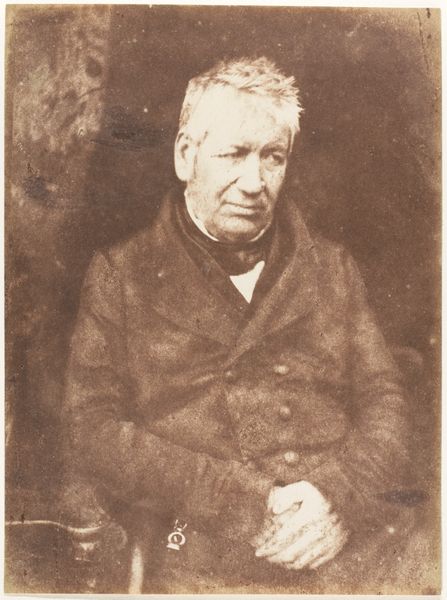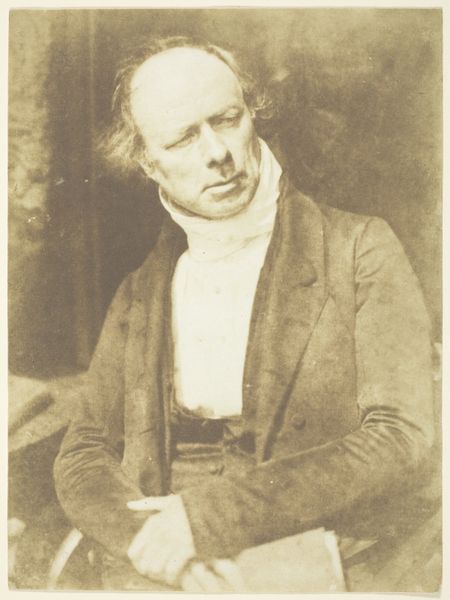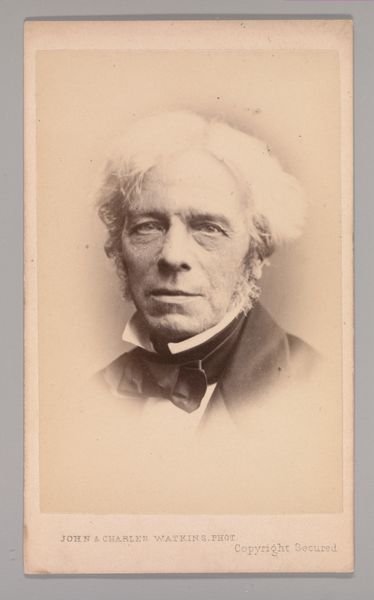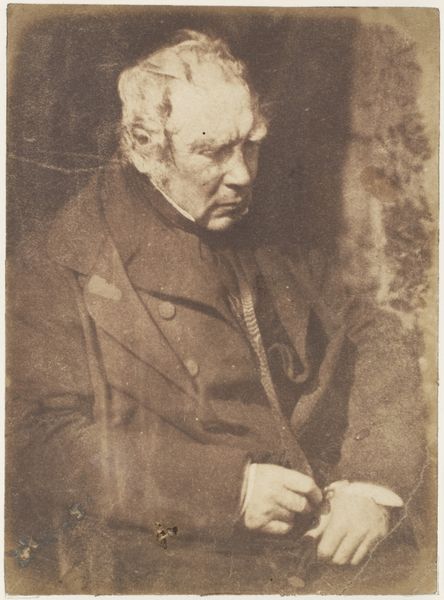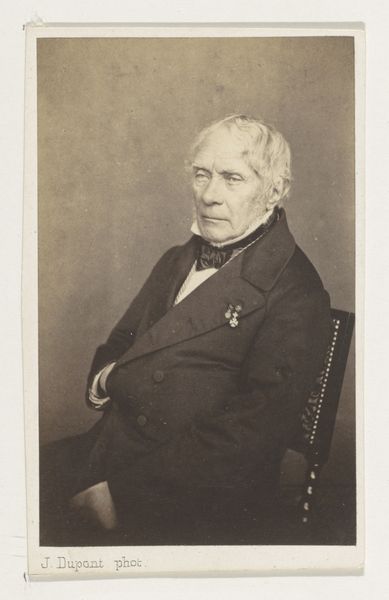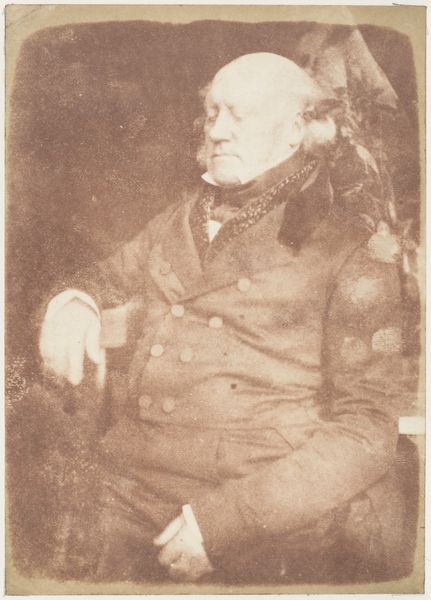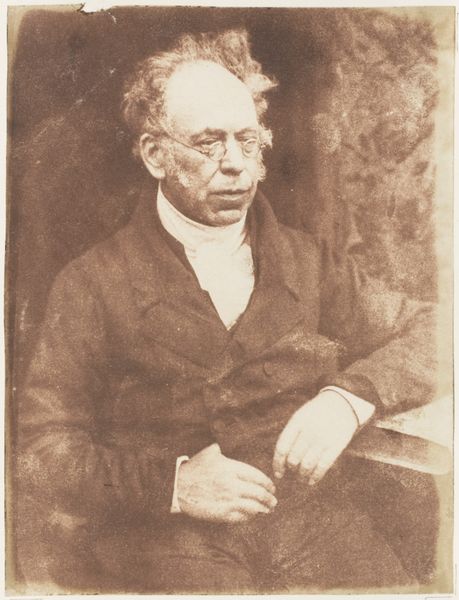
daguerreotype, photography
#
portrait
#
daguerreotype
#
photography
#
historical photography
#
romanticism
#
men
#
portrait photography
Copyright: Public Domain
Editor: This daguerreotype, taken by Hill and Adamson between 1843 and 1847, depicts Sir William Allan. It’s a strikingly intimate portrait. I’m curious, considering the period in which it was made, how do we understand the cultural importance of a portrait like this? Curator: Given photography’s relatively nascent status in the 1840s, portraits such as this played a critical role in democratizing access to image-making. Before photography, portraits were largely limited to the upper classes. Here, Allan, a prominent figure himself as President of the Royal Scottish Academy, participates in this new technology. He validates it and it memorializes him. Consider, too, the scientific advancements rapidly unfolding; how did photography intersect with notions of progress, objectivity, and the very definition of representation at the time? Editor: That's fascinating! So, beyond accessibility, how might the photographic process itself— the specificities of the daguerreotype— have influenced its reception? Was this process deemed particularly 'objective' compared to painting? Curator: Precisely. The perceived objectivity of the daguerreotype lent it a certain authority. However, even in these early stages, photographic portraits were rarely devoid of artistic intervention. Note the staging, Allan's posture, even the lighting. Hill and Adamson weren’t simply recording; they were composing. Doesn't that blurring of objectivity and artistry shift how we perceive the relationship between art, science and society then and now? Editor: Definitely. It makes me think about the power of even documentary-style images to shape how we understand historical figures and even ourselves today. Thank you. Curator: It was enlightening, thinking about the societal shifts happening during this technological transformation together!
Comments
No comments
Be the first to comment and join the conversation on the ultimate creative platform.

